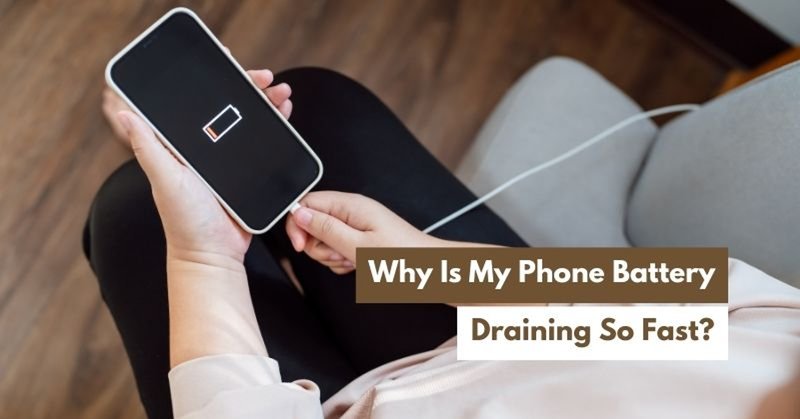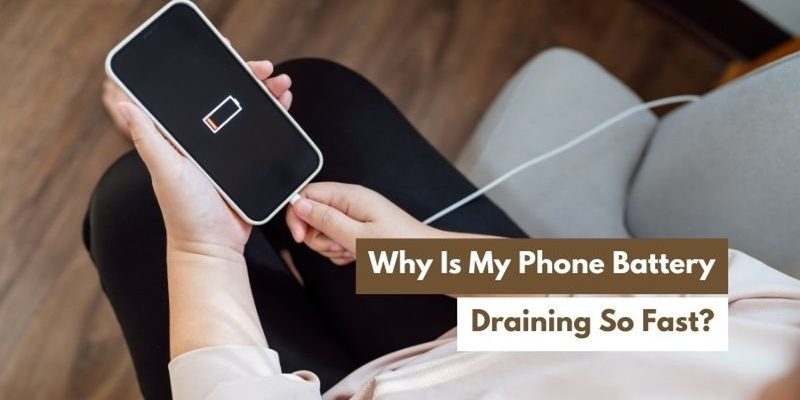
Let me explain: smart handlesets are a little like tiny computers stuck to your door. They work by syncing with your smartphone, connecting to Wi-Fi or Bluetooth, and powering motors to lock and unlock the door—all of which chew through battery if something’s not right. Sometimes, the problem is a quirk in your setup, a code update gone sideways, or even the wrong type of battery. Other times, it’s something more basic, like the way you use the device every day.
Let’s break down the most likely reasons why your smart handleset battery keeps running dry. I’ll walk you through each cause, from software glitches to hardware quirks, and give you practical troubleshooting steps—no engineering degree required.
How Smart Handlesets Use Power
Before we start poking around for problems, it helps to know how smart handlesets actually work. Unlike old-school deadbolts, smart locks like the Schlage Encode or Yale Assure have little motors and circuit boards inside. Every time you tap your phone or punch in a code, that triggers a chain of events: a chip wakes up, checks your credentials, powers up the motor, and moves the bolt. All this runs on battery power.
But here’s the catch: smart handlesets aren’t just “on” during use. Many are always listening for a signal from your phone or remote, like a dog waiting for the doorbell. This standby mode can use a trickle of power nonstop. Add in other features—like Wi-Fi, Bluetooth Low Energy, or a connection to your smart home hub—and you’ve got a recipe for steady battery drain, even if you’re not unlocking the door every five minutes.
Honestly, it’s a delicate balancing act. Brands design their locks to last as long as possible between battery swaps, but even minor issues (like a sticky mechanism or a weak wireless signal) can throw off the whole system. That’s why it’s so important to understand exactly what’s sipping—or guzzling—your battery juice.
Common Causes of Fast Battery Drain
You might be wondering, “So what actually causes my smart handleset battery to run down so quickly?” There’s no single answer, but some culprits show up over and over. And yes, most of them are pretty easy to fix once you know what’s going on.
- Wi-Fi or Bluetooth Connectivity Issues: If your lock is struggling to stay connected, it keeps retrying the sync with your network or remote—using more battery every time it tries.
- Frequent Usage: More unlocks mean more work for the motor. If you’re running a busy household or using automation routines, don’t be surprised if battery life drops.
- Improper Installation: If the bolt isn’t lined up smoothly, the motor has to fight to lock or unlock. That extra strain can seriously drain the battery.
- Hot or Cold Weather: Extreme temperatures mess with battery chemistry. Freezing winters or baking summers both shorten lifespan.
Let me give a quick example: I set up a smart handleset for a friend in an old house. The bolt was rubbing against the frame, just a little bit. Sure enough, the lock chewed through batteries every three weeks—until we realigned the strike plate. Sometimes the fix is as simple as tightening a screw.
Choosing the Right Batteries for Your Smart Handleset
Here’s the thing: not all batteries are created equal, especially when it comes to powering smart handlesets. Most brands—whether it’s August, Yale, or Schlage—recommend using good old alkaline AA or AAA batteries. Why? Alkalines deliver a steady voltage, which your lock’s electronics depend on to sense when power is running low.
You might be tempted to use rechargeable NiMH batteries or lithium ones because they sound fancier. Big brands usually warn against it. Rechargeables drop in voltage much faster as they discharge, which can make your smart handleset misread how much power it has left—or even shut down without warning. Lithium batteries work better in cold weather, but sometimes deliver higher voltages that older lock models can’t handle.
- Use fresh, high-quality alkaline batteries.
- Avoid mixing old and new batteries.
- Don’t use bargain-brand batteries from the dollar store for critical devices.
If you’re troubleshooting fast battery drain, swapping in a brand-new set of recommended alkaline batteries is a smart first step—just to rule out the basics.
Connectivity Problems and Wireless Interference
Let’s talk about Wi-Fi, Bluetooth, and all those invisible signals shooting through your house. Your smart handleset needs a stable connection to your phone, smart home hub, or remote—for everything from unlocking the door to syncing codes or sending alerts. If the signal is weak or keeps dropping, your lock works overtime trying to reconnect.
For example, if your router is at one end of the house and your smart lock is at the other, the lock might waste battery repeatedly searching for a better signal. Same goes for Bluetooth: thick walls, metal doors, or even appliances can block or weaken signals. Sometimes, a neighbor’s Wi-Fi or a baby monitor on the same frequency can cause interference. Sound silly? It happens all the time.
Here’s how connectivity issues drain the battery:
- Constant Sync Attempts: The lock wakes up again and again to try and connect, using a burst of power each time.
- Longer Wake Times: If syncing takes longer, the electronics stay active instead of quickly going back to sleep.
- Code or Firmware Updates: These can keep the lock busy for several minutes, especially if something goes wrong and the update fails halfway through.
Moving your router closer, using a Wi-Fi extender, or even just changing the lock’s position on your door can make a surprising difference. If you’re seeing battery drain alongside network issues, tackle the signal problems first.
Software Bugs and Firmware Updates
Every smart handleset runs on its own little computer program—what techies call firmware. Just like apps on your phone, this code sometimes needs an update or patch. Usually, firmware updates fix bugs, improve security, or add features like new ways to pair remotes or change lock codes.
But here’s the catch: once in a while, a buggy update can mess things up. Maybe the lock gets stuck in a high-power mode, or fails to “sleep” between actions, draining the battery much faster than normal. Or the update doesn’t finish properly, leaving the lock confused and chewing through power as it tries to reset.
If you’ve recently updated your smart handleset and the battery started dying faster, it’s a big clue—something in the new code may be at fault.
- Check for firmware updates in your app. Some brands let you manually reset or re-pair the lock after an update.
- Reach out to customer support. If others are having the same issue, the brand may release a patch.
- Factory reset as a last resort. Resetting wipes custom settings, but can resolve persistent battery drain from software glitches.
It’s easy to forget that “smart” devices rely on software, not just hardware. Always keep your lock’s app and firmware up to date—but if something goes wrong, a rollback or reset may save you from constant battery swaps.
Mechanical Resistance and Installation Flaws
Mechanical problems are surprisingly common battery killers. If your door frame shifted a little over time, or your smart handleset wasn’t lined up right to begin with, the lock’s motor ends up working extra hard each time you lock or unlock. Sometimes, it even fails to complete the movement smoothly, making the lock retry several times—and using even more battery in the process.
Here’s a quick story: a friend called me saying their Schlage smart lock stopped working after just a couple of weeks. Turns out, the deadbolt was slightly catching on the edge of the strike plate. A few quick adjustments, and suddenly the handle turned easily—and the battery life went back to normal.
- Check for smooth locking and unlocking—by hand and using the smart handleset.
- Listen for grinding, clicking, or motor strain.
- If the bolt sticks, adjust the strike plate or door alignment.
It seems simple, but just a little mechanical resistance can cause big battery headaches. If you’re troubleshooting, don’t skip a careful hands-on check.
Environmental Factors: Temperature and Humidity
Here’s something people often overlook: batteries are picky about weather. If your smart handleset is exposed to extreme cold in the winter or intense heat in the summer, don’t be surprised if the battery runs out much faster than usual. Cold weather slows down the chemical reactions inside standard alkaline batteries. The result? Less energy and more frequent changes.
High humidity can creep inside the casing and cause corrosion, which also saps power or disrupts the electrical connection. If your lock faces direct sun or lives on a drafty old door, it’s even more vulnerable.
- In cold climates, consider using lithium batteries if your manufacturer approves.
- Try a weatherproof cover to shield the lock from the elements.
- Regularly check for moisture buildup or signs of corrosion.
If you notice your battery drain lines up with the seasons, it’s no coincidence. Adjusting your setup for the weather can make a notable difference.
Smart Home Integrations and Automation
Many smart handlesets now sync with broader home automation platforms—think Alexa, Google Home, or Apple HomeKit. While the convenience is awesome, all those automated routines and remote access features can drain your battery a little faster—especially if they trigger the lock to wake up and run more often.
Here’s an example: if you’ve set your door to lock or unlock whenever you leave or arrive (using geofencing), that means your lock is checking your phone’s location and syncing codes much more frequently. Or maybe you’ve got multiple users, with each new code or remote pairing triggering another sync with the system.
- Limit unnecessary routines or automatic triggers.
- Balance convenience with battery life—only use what you need.
- Check your app for usage logs; they can reveal hidden drainers or excessive syncing.
If you’re a smart home super-user, be mindful of how connected routines impact the hardware. Sometimes, dialing back integrations boosts battery life without losing key features.
Troubleshooting and Fixes for Fast Battery Drain
Let’s pull it all together. If your smart handleset battery is draining too quickly, here’s a slow, methodical approach to get things back on track.
Start with the easiest fixes and move up to more technical solutions if needed. One change at a time makes it easier to spot what’s working.
- Replace with fresh, recommended batteries. Don’t mix old and new; stick with the brand’s suggestion.
- Check for firmware or app updates. Install any that are available, and look for notes on battery or connectivity fixes.
- Inspect your lock’s physical installation. Make sure the bolt glides smoothly, no sticking or grinding.
- Test connectivity strength. Try moving Wi-Fi access points, or reduce wireless interference.
- Disconnect or limit automation routines. Only leave the smart home features you really use.
- If all else fails, try a reset or contact support. Sometimes a full reboot solves weird, lingering bugs.
Patience pays off. Sometimes the culprit is obvious (batteries, weather, physical misalignment), and sometimes it takes a little digging through settings and logs. Stick with it, and you’ll get your smart handleset back to the months-long battery life you should expect.
Closing out, here’s what matters: most smart handleset battery issues aren’t permanent. Whether you own a Yale, August, or Schlage, a few simple checks—fresh batteries, smooth mechanics, clear signals, and mindful integrations—can add weeks or months between battery swaps. Save yourself the frustration, follow the troubleshooting steps above, and enjoy all the “smart” without the frequent dead batteries.
